LIXIL makes pioneering water and housing products that solve everyday, real-life challenges, making better homes a reality for everyone, everywhere.
- Global Site
-
- English
- Japanese
- Brand Sites
Global
- Global Site
-
- English
- Japanese
- Brand Sites
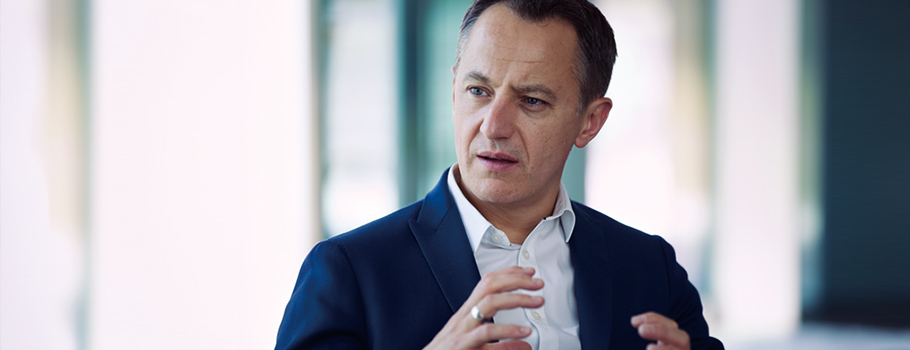
Updated: Jun 3, 2016
As design head at Grohe, Paul Flowers helped create some of the world's most beautiful kitchen and bathroom fixtures. Now, as Chief Design Officer of LIXIL's Water Technology Group, he reveals how the company is applying design, technology and social purpose to reimagine the most intimate spaces in our homes.
Paul Flowers is working his way through Grohe's gleaming showroom in New York City, pausing at displays of bathroom and kitchen fixtures that catch his discerning designer's eye. He admires a showerhead with a spray inspired by an Aboriginal twig massage, and one shaped like a lozenge that mimics the actual contours of the human body. He points out another that is angled in a way to significantly reduce its packaging and environmental impact.
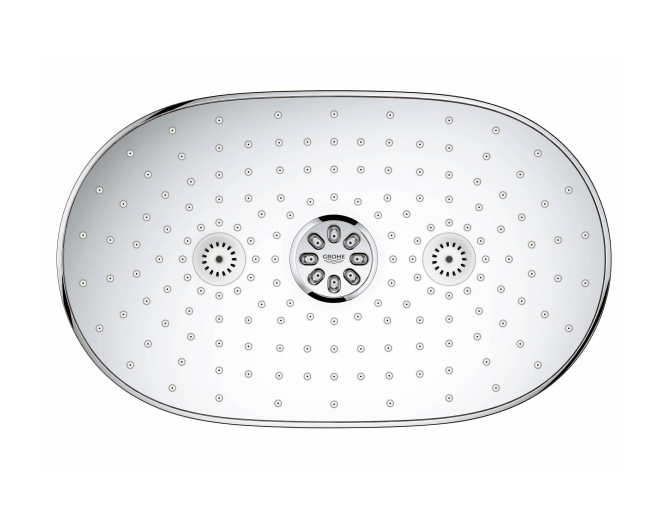 For Flowers, these products illustrate the logical evolution of the traditional bathroom space. With technology making our homes and communications devices smarter, consumers today expect water products to be more than just functional tools for cleaning and grooming.
For Flowers, these products illustrate the logical evolution of the traditional bathroom space. With technology making our homes and communications devices smarter, consumers today expect water products to be more than just functional tools for cleaning and grooming.
Bathrooms have become more comfortable and sensorial, and intelligent too. Water technology products understand our daily routines and gently nudge us to reduce water consumption. You can still brush your teeth, of course, but also indulge in a home spa treatment and control water flow by simple touch, all while reducing your carbon footprint.
As technology seeps into our homes, Flowers describes how novel design, digital tools and the urgent need to conserve our precious natural resources will define the water products of the future and how we use them.
I'm often asked what designers do. We're storytellers. We express stories through form, guiding consumers to their interaction with a product and communicating what the technology inside the aesthetic does. I call it product psychology, starting with knowing what the user wants and designing a product that leans in with its body language to meet that need, whether it's a faucet or a toilet or a sink.
When LIXIL acquired Grohe in 2013, I transitioned from leading design at one great brand to overseeing many at LIXIL. Now I am the guardian across all our design studios. What that means is creating a culture of design by finding the most skilled and creative people, taking risks with the cutting edge technology and trends, and aiming for the highest quality in whatever we do. That great design DNA is implanted in all our brands.
Bathrooms have traditionally been private, intimate spaces. What other room in the house do you routinely lock? Today that concept is morphing in new directions. The bathroom space is opening up, much like the kitchen did when it transitioned from a functional area to cook and prepare food to the place where you serve and enjoy a meal. That's when more dramatic elements appeared in kitchens, like high-end extractor fans and stove hoods.
The bathroom and living area are coming together in a similar way, with implications for how we design. Extra square footage is shifting our perception of the bathroom, providing more freedom for designers to experiment with new ideas, materials and technology.
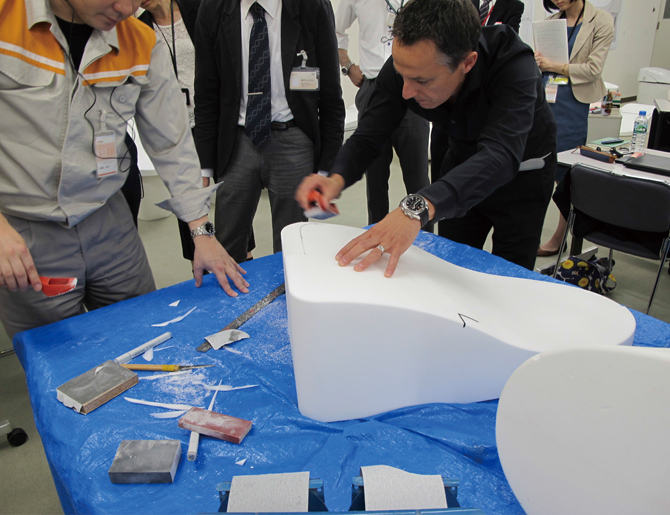 Increasingly, the wall between the bath and living area in homes is being removed to create a flowing, open-plan space. With no barriers, noise becomes a bigger issue. To adapt to these changes, we're looking at quieter toilet flushes and shower systems that minimize disturbances and cancel out sounds.
Increasingly, the wall between the bath and living area in homes is being removed to create a flowing, open-plan space. With no barriers, noise becomes a bigger issue. To adapt to these changes, we're looking at quieter toilet flushes and shower systems that minimize disturbances and cancel out sounds.
Our primary focus is how consumers experience water products. That has driven the transformation of bathroom from a rational space to an emotional one where the senses are stimulated. Where do we go from here? I envision experiences that make our lives even richer. At Grohe we introduced a line of candles, but in the future I expect to see scents coming from polymers embedded in tiles or in other products that emit aromas.
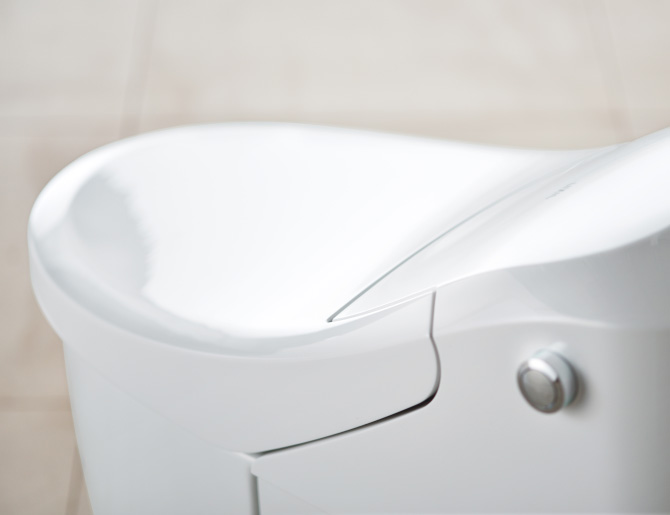 Technology will lead the way in a more active rather than a passive way. There will be intelligent diagnosis that's in sync with your body. In fact, the toilet will likely become an enabler to impact other things in your life, extracting data about what you've eaten and suggesting lifestyle changes—even ordering healthier food for you at the local market. Stuck in traffic? Your car GPS will link with a smart bathroom device to ensure your bathwater is filled and at the right temperature when you eventually get home.
Technology will lead the way in a more active rather than a passive way. There will be intelligent diagnosis that's in sync with your body. In fact, the toilet will likely become an enabler to impact other things in your life, extracting data about what you've eaten and suggesting lifestyle changes—even ordering healthier food for you at the local market. Stuck in traffic? Your car GPS will link with a smart bathroom device to ensure your bathwater is filled and at the right temperature when you eventually get home.
There will be opportunities to apply voice recognition technology and cameras that monitor our health. Technology won't overwhelm us, but help us tap into new experiences. It all starts with a company like ours. We're in the best position to drive the biggest changes in bathrooms and water products in years.
When people think about sustainability and bathrooms they focus on reducing water flow with restrictors and low-flow faucets. I figure that any company can reduce water flow. For me, the real challenge of sustainability is to reduce water consumption and give the consumer a great experience and sense of "ecological enjoyment."
Consumers often waste gallons of water in the shower, usually when they soap up or wash their hair. So we created a number of products empowering them to save water, like a digital pause button on the F-Digital line. It looks like a hockey puck, and when you press it the water stops and restarts at the same temperature. Another advance is the EcoButton that reduces water flow by 50 percent.
Many of these innovations evolve from asking the question, how can I do more with less and still enjoy the experience? We looked at the shape of the human body from above, and realized that while the average body isn't round, most showerheads are. This led us to design the lozenge-shaped Rainshower Next Generation Eco showerhead, which allows the sprays to hit the body directly, and not waste lots of water by dousing the wall or shower tray.
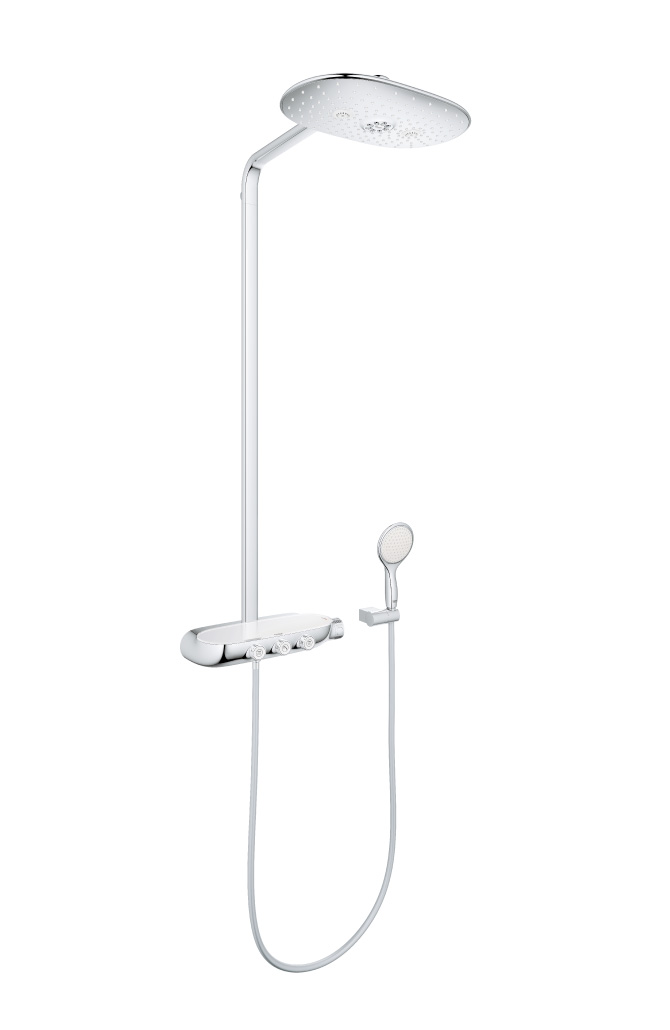 At the same time we're always striving to remove anything unnecessary from our products. This approach freed us to challenge something unusual—the angle of the showerhead. What we found was that by changing the angle from the average 45 degrees to 7 degrees, we could reduce packaging [on some products] by 50 percent. Now, twice as many can be put on pallets and trucks and planes. That's huge in terms of reducing carbon footprint and distribution costs.
At the same time we're always striving to remove anything unnecessary from our products. This approach freed us to challenge something unusual—the angle of the showerhead. What we found was that by changing the angle from the average 45 degrees to 7 degrees, we could reduce packaging [on some products] by 50 percent. Now, twice as many can be put on pallets and trucks and planes. That's huge in terms of reducing carbon footprint and distribution costs.
There's still so much out there to be discovered about how to be more sustainable and help consumers reduce consumption. We need to focus not just on reducing water usage but also look at the bigger picture and all the resources we take from the earth and what we do with them.
Not long ago bathroom "technology" might have been a showerhead with a dial to select multiple sprays. That seems quaint by today's standards, as technology and the Internet of Things transform the bathroom in both subtle and profound ways.
New technologies have led LIXIL to products with improved grips, as well as easy-to-read graphics, and touch control for an aging demographic. Programmable thermostats remember your favorite water temperature settings. Sometimes we bring together the old and the new, like the Bokoma spray in the Grohe Power&Soul line, featuring powerful jets that mimic the centuries old Aboriginal tradition of twig massage.
The problem is moving too fast with technology. We must be mindful of some people's resistance to the intrusive feeling of technology everywhere. So before rushing to connect everything in the bathroom, we always ask what purpose the technology serves and what value it brings to our lives. When you take technology first and then try to find a home for it, chances are good it won't work. It will be just technology for technology's sake.
Our Stories
- Backing People and Passions to Drive Innovation
- How Toilets in Schools are Catalyzing Change in Communities
- Building the Future by Recycling the Past
- Reinventing Consumer Connections in the World's Largest E-commerce Market
- Tackling Household Water Inefficiency in a Water-Stressed World
- Plugging the Plumber Shortage
- Pioneering Solutions to a Sewage Crisis in Rural Alabama
- Meet the Citizen Developers Changing How We Work
- Design and Brand Identity Transformation at LIXIL
- Three Changes to Prepare Europe’s Sanitary Industry for Growth
- Three Steps to Creating an Inclusive Culture
- From Linear to Circular: Giving Products in Your Home a New Lease of Life
- Crafting Unique Experiences as well as Products
- GROHE X: A Digital Brand Experience
- Design-led Innovation Delivering True Value
- Responsible Use of Plastics
- Empowering our People for an Agile Future
- Turning the Waves of Change into Opportunities
- SATO Tap: a New Handwashing Solution for All
- New Ways of Working Take Flight at LIXIL
- INAX: Rituals of Water
- Refreshing our sanitation targets, standing firm on our commitments
- Developing Attractive and Differentiated Products
- Conserving Water: The New Normal
- Insulating For a Warmer and Healthier Home
- Open Kitchen, Open Communication
- Tackling Open Defecation in India
- Shaping the Future of Faucets, One 3D Layer at a Time
- Bathed in Culture and Tradition
- Remodeling the Housing Market
- LIXIL's AQUA CERAMIC makes bathroom stains a thing of the past
- The Technology of Water
- Tackling Challenges in Global Sanitation and Hygiene
